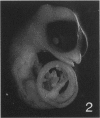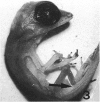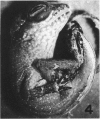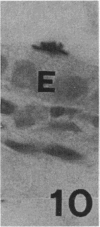Abstract
The development of scales was analysed in embryos of the Jamaican Iguanid lizard Anolis lineatopus after the injection of cell proliferation markers [3H]thymidine and 5-bromodeoxyuridine. Embryos were fixed at successive postinjection periods, from 2 h up to 13 d and sections of developing skin were studied by autoradiography and immunocytochemistry. The epidermis during the initial stages of morphogenesis (flat epidermis and symmetric scale stages) expands chiefly by the tangential proliferation of the basal layer. The superficial periderm took part in its own laminar expansion. The rates of proliferation in the epidermis and dermis were similar during the flat epidermal stage, but dermal proliferation decreased under the wave-like epidermis of symmetric scales. No specific localisation of proliferating cells was visible either in the epidermis and or the dermis at these 2 early stages. Scale asymmetry is brought about by cell multiplication and hypertrophy of the cells of the future outer surface of the scale that behaves as an epithelial placode capable of producing beta-keratinised cells. The growth of the outer surface determines the asymmetry of the scale. Conversely, the future inner side and hinge region showed a lower degree of cell proliferation and cells remained cuboidal or became flat. Also the proliferation of the dermis under the scaling epidermis was significantly diminished. During the asymmetric scale stage, labelled cells were more common in the hypertrophied basel epithelium from 2 h until 4 d postinjection, during which time a few cells moved into the upper keratinizing layers. At 6-13 d postinjection, labelled cells were commonly seen in the upper beta-keratinising layers.
Full text
PDF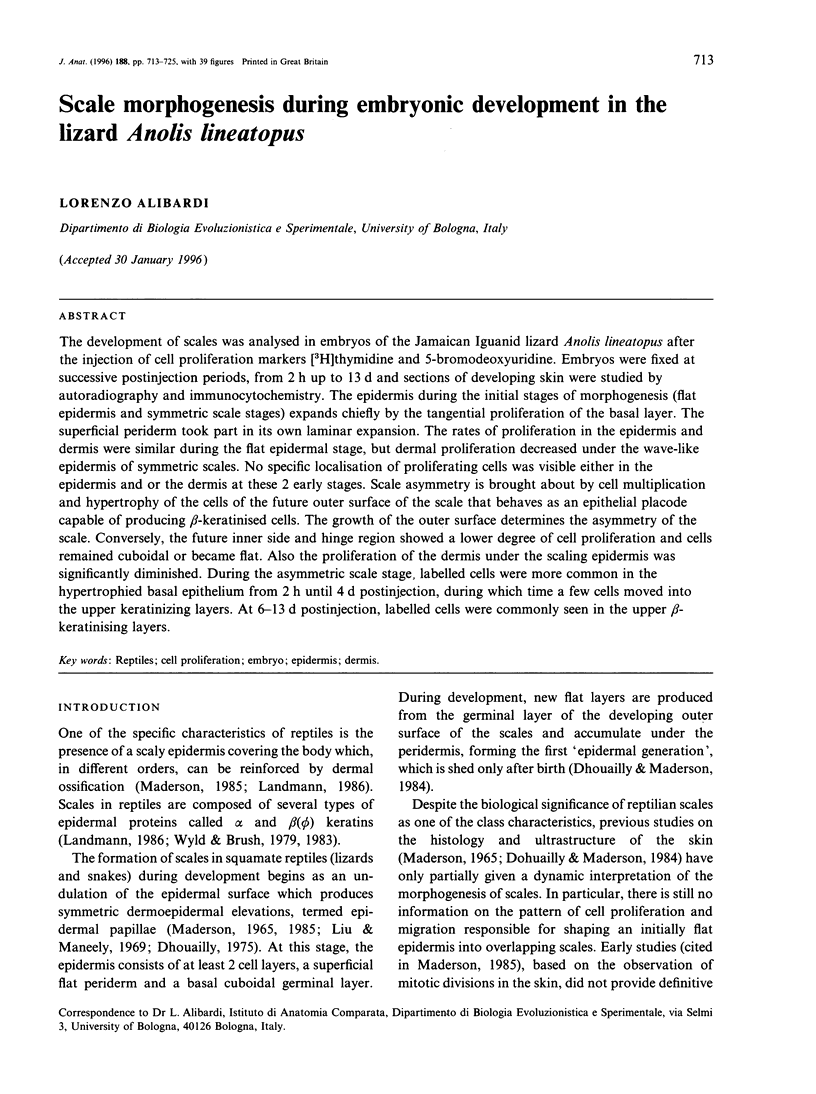
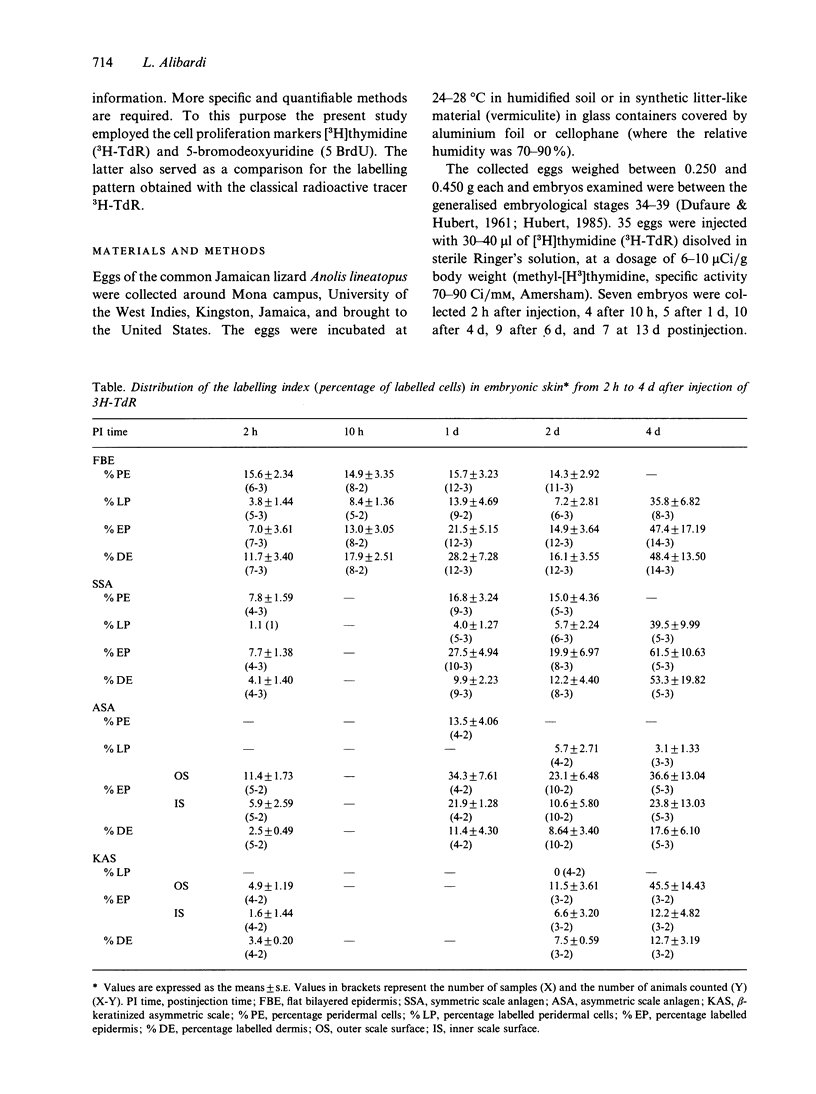
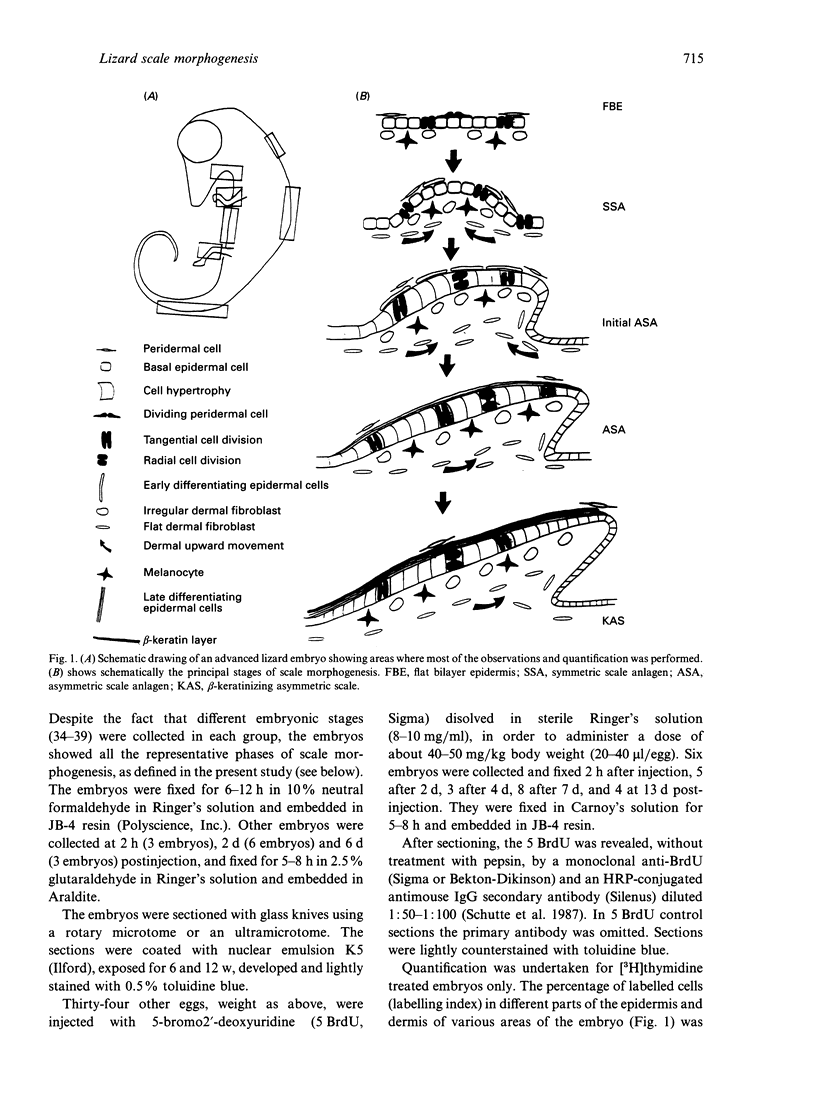
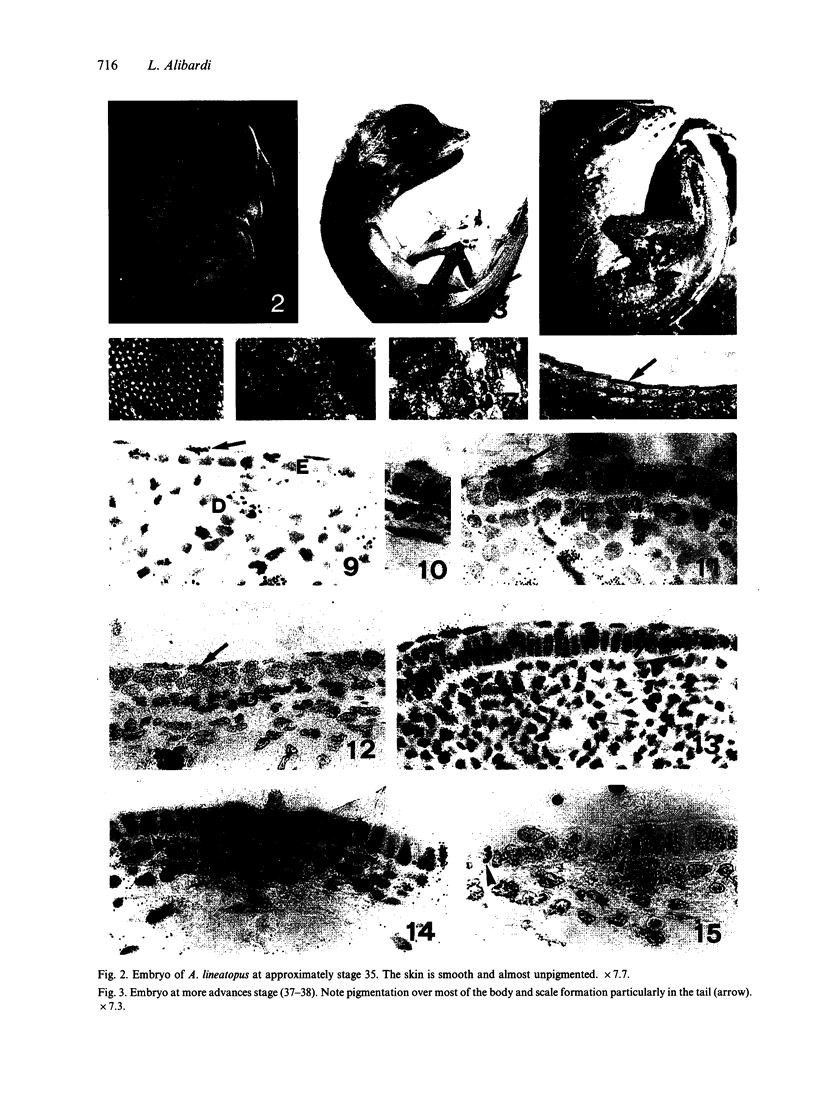
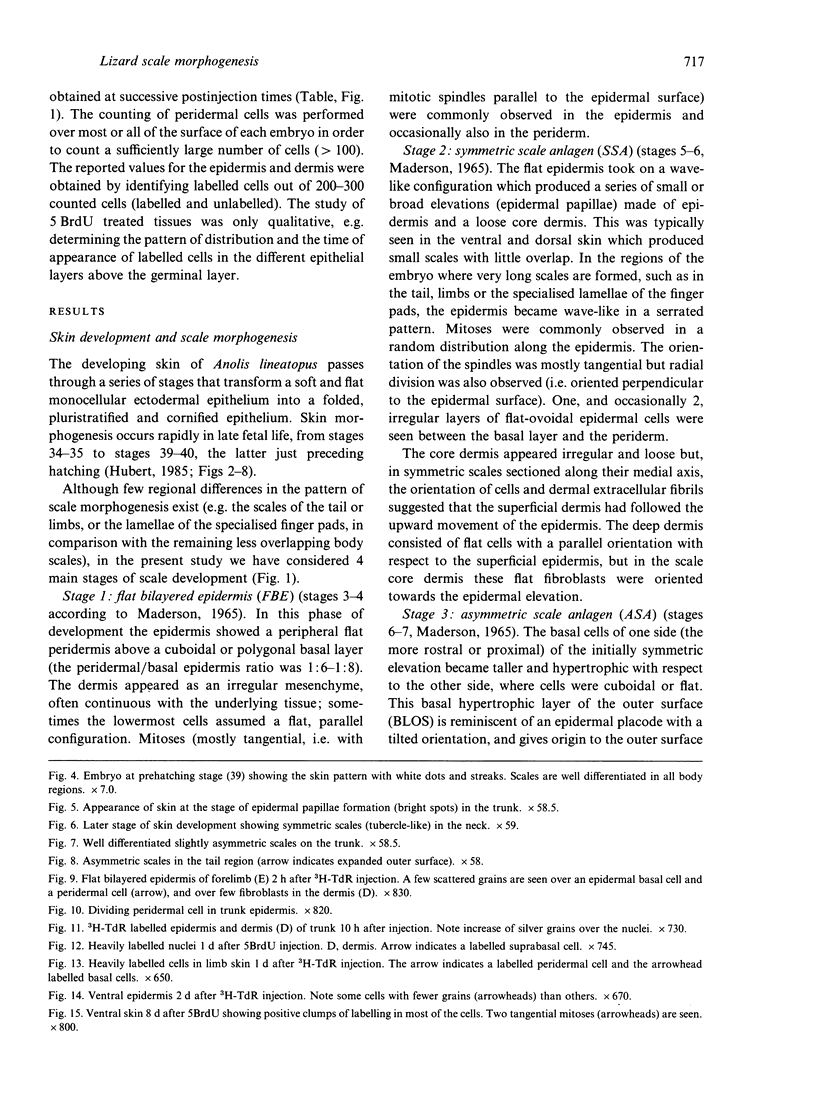
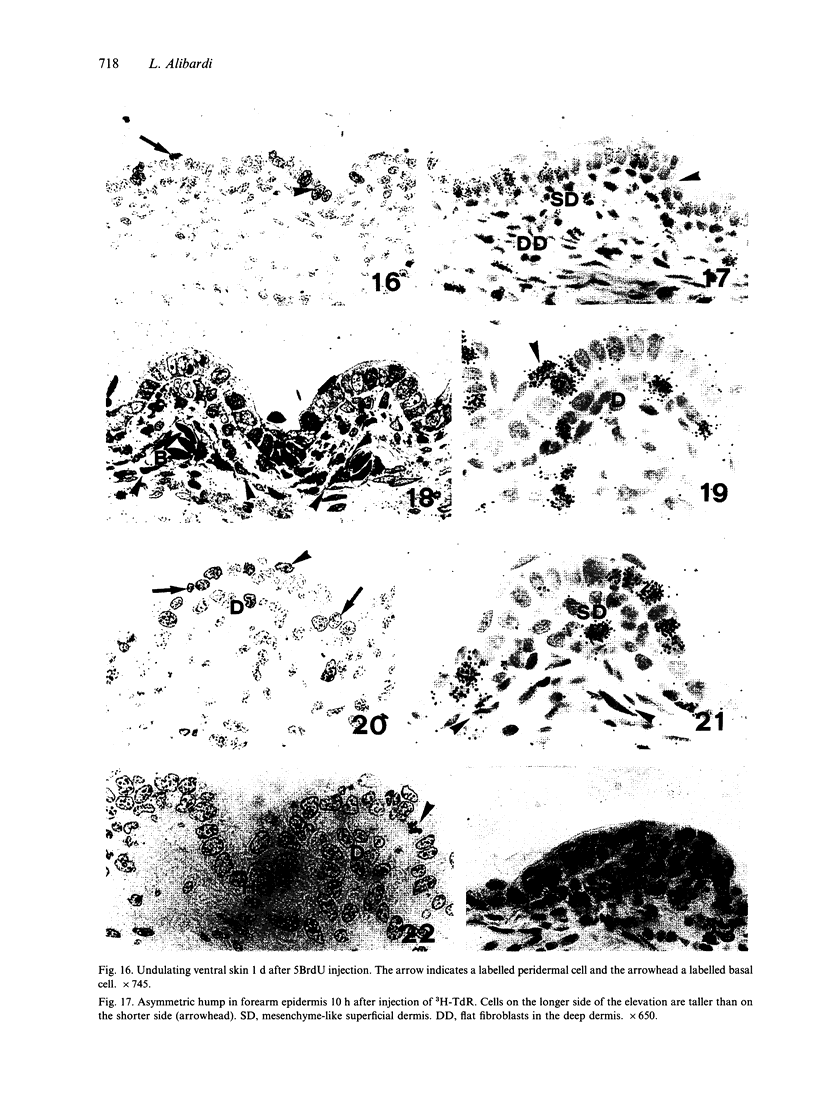
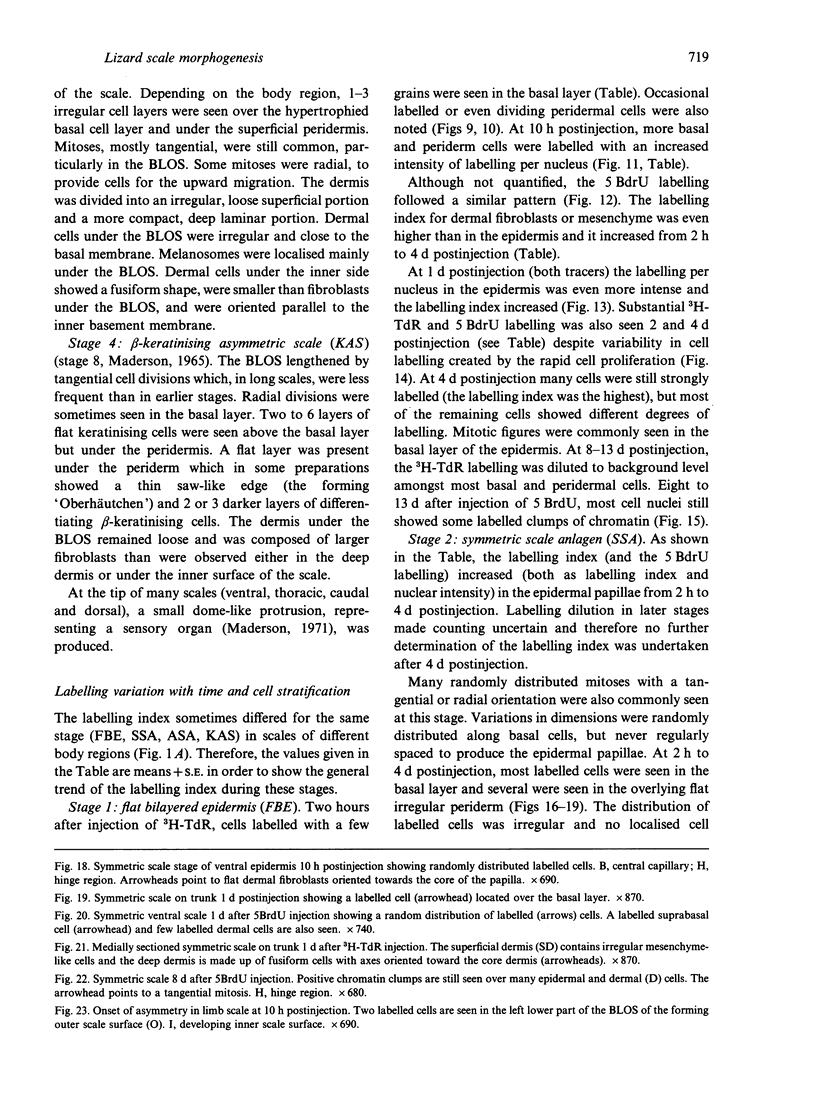
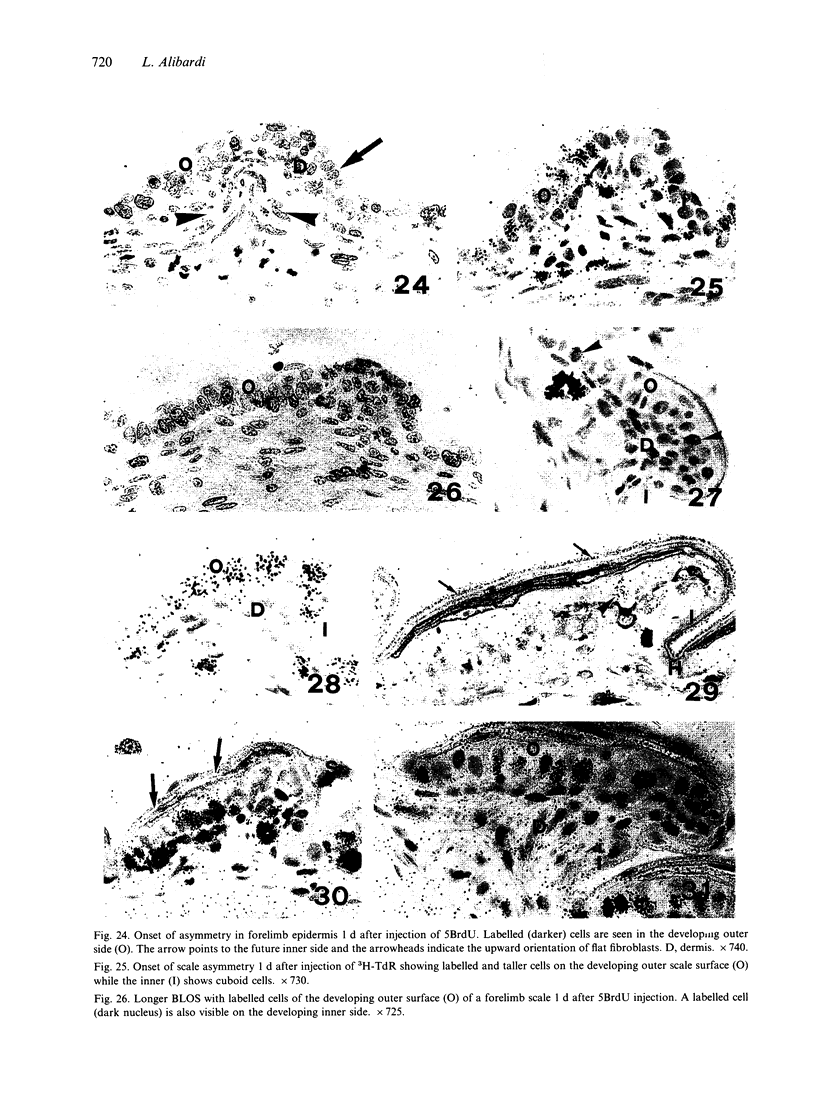
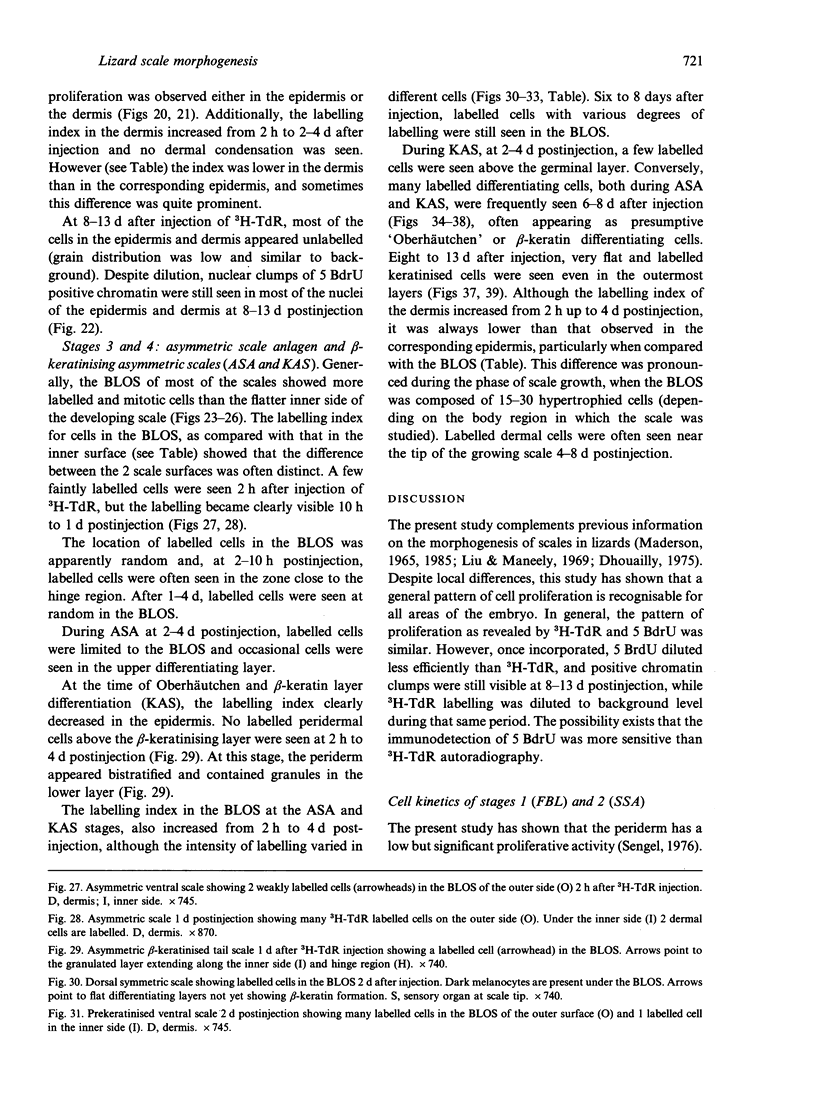
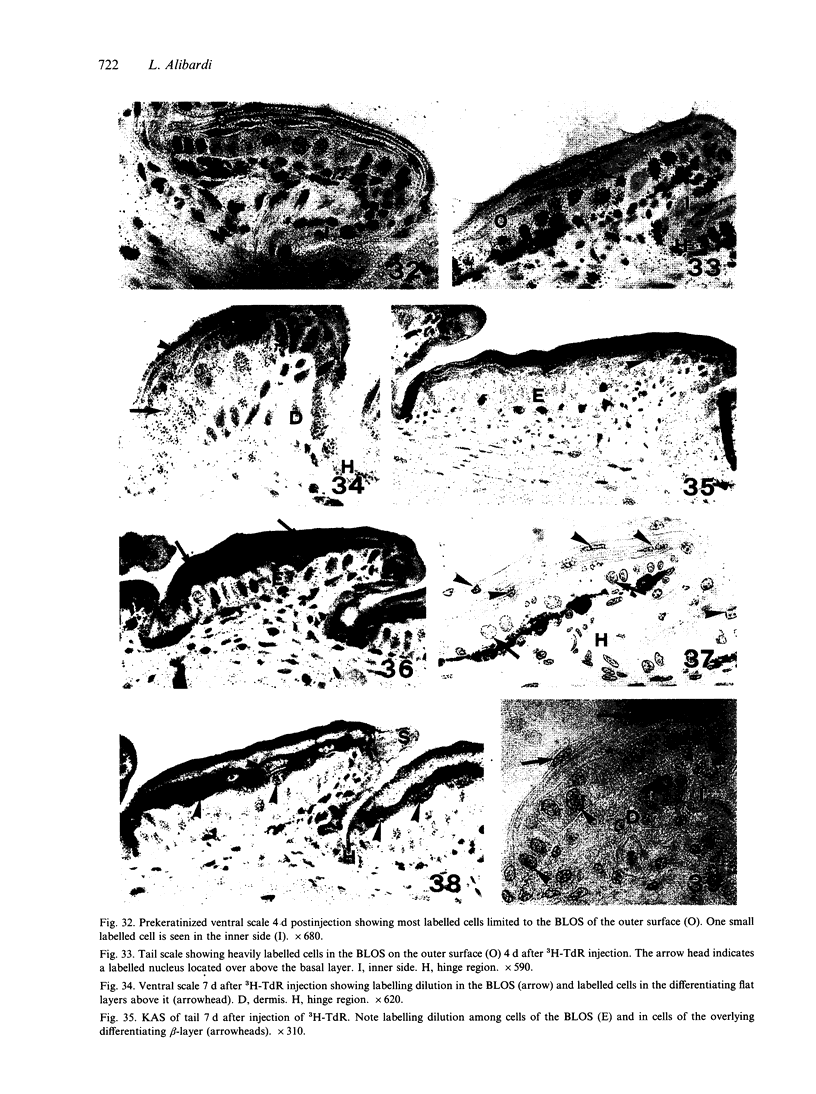
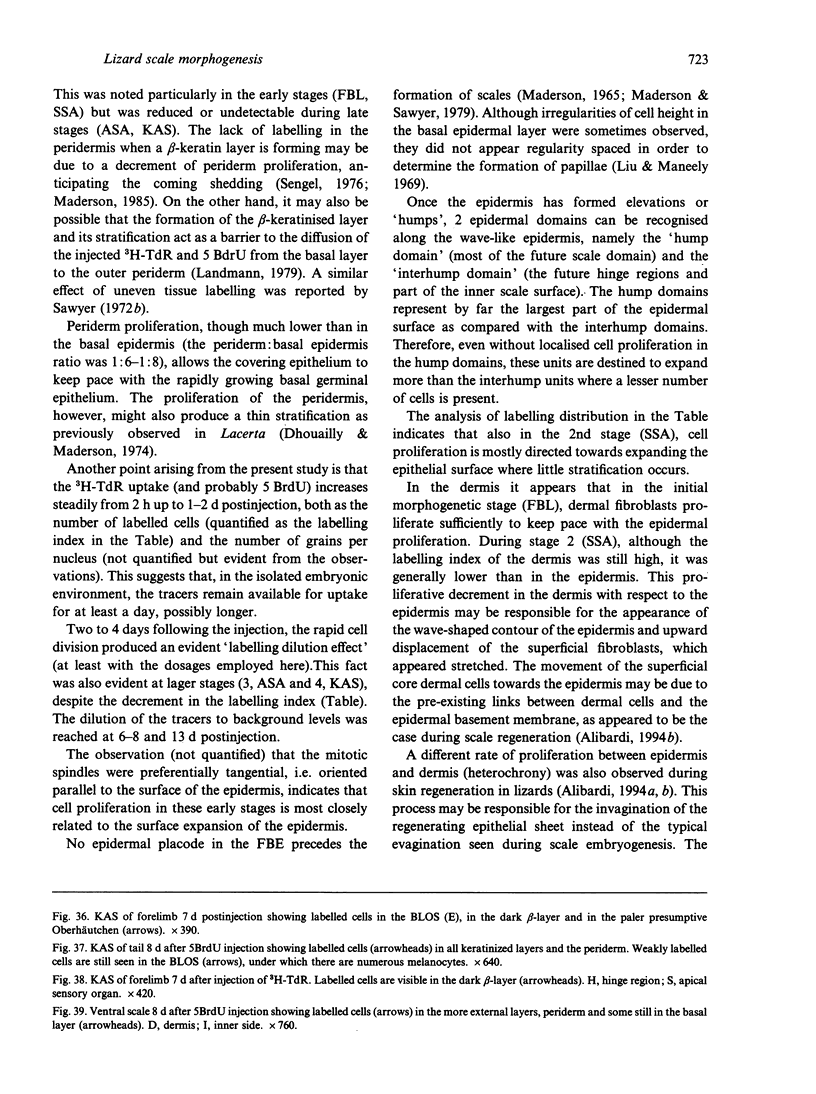
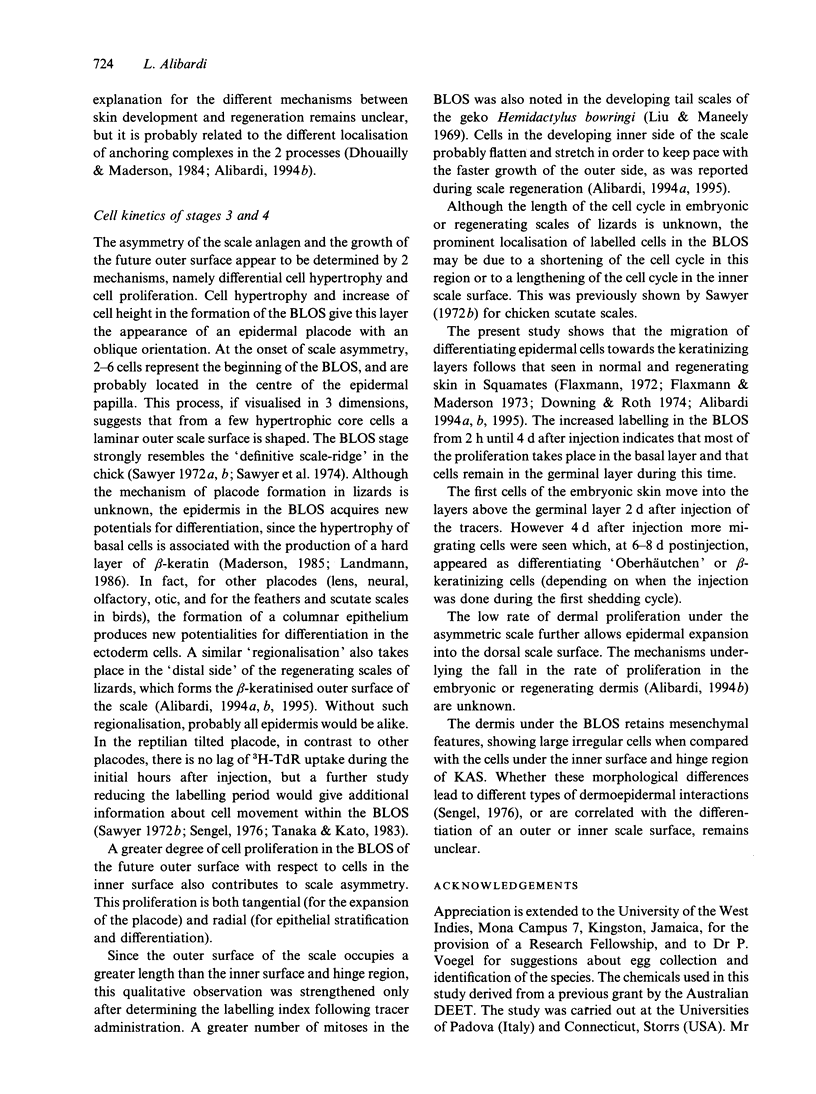
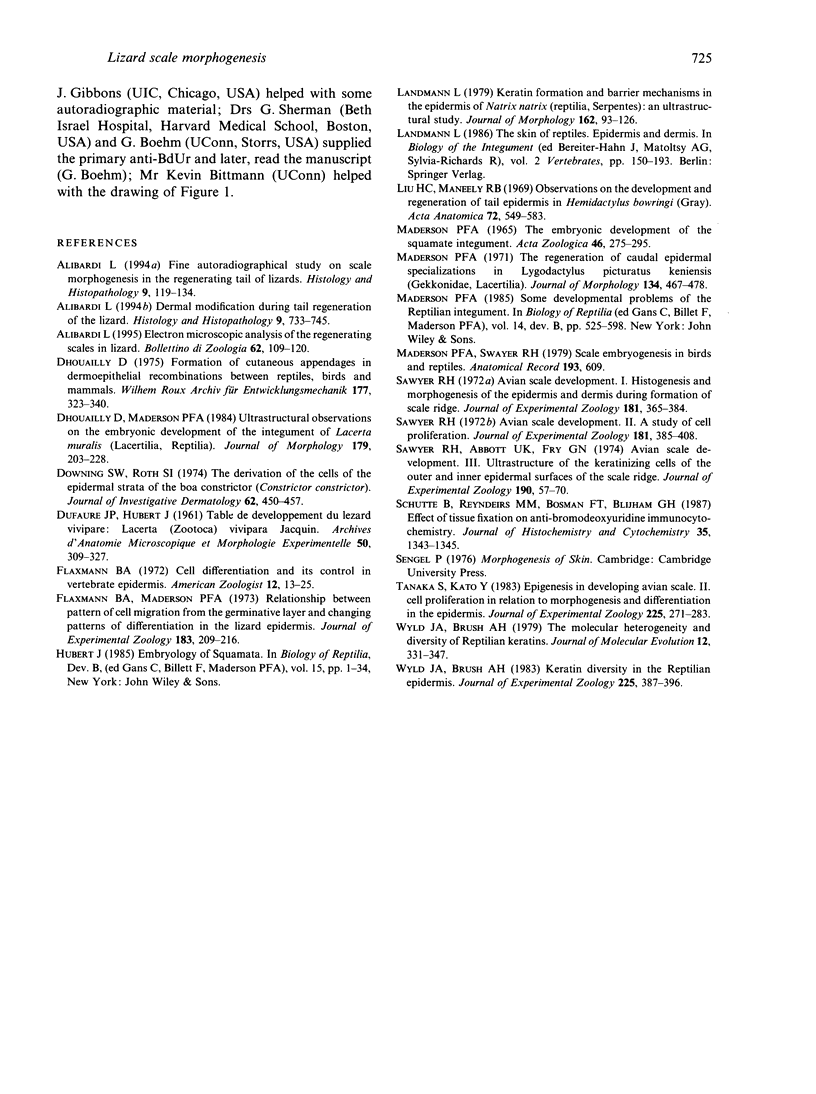
Images in this article
Selected References
These references are in PubMed. This may not be the complete list of references from this article.
- Alibardi L. Fine autoradiographical study on scale morphogenesis in the regenerating tail of lizards. Histol Histopathol. 1994 Jan;9(1):119–134. [PubMed] [Google Scholar]
- Alibardi L. Modifications of the dermis during scale regeneration in the lizard tail. Histol Histopathol. 1994 Oct;9(4):733–745. [PubMed] [Google Scholar]
- Downing S. W., Roth S. I. The derivation of the cells of the epidermal strata of the boa constrictor (Constrictor constrictor). J Invest Dermatol. 1974 Apr;62(4):450–457. doi: 10.1111/1523-1747.ep12701696. [DOI] [PubMed] [Google Scholar]
- Flaxman B. A., Maderson P. F. Relationship between pattern of cell migration from the germinal layer and changing patterns of differentiation in the lizard epidermis. J Exp Zool. 1973 Feb;183(2):209–216. doi: 10.1002/jez.1401830209. [DOI] [PubMed] [Google Scholar]
- Liu H. C., Maneely R. B. Observations on the development and regeneration of tail epidermis in Hemidactylus bowringi (Gray). Acta Anat (Basel) 1969;72(4):549–583. doi: 10.1159/000143269. [DOI] [PubMed] [Google Scholar]
- Maderson P. F. The regeneration of caudal epidermal specializations in Lygodactylus picturatus keniensis (Gekkonidae, Lacertilia). J Morphol. 1971 Aug;134(4):467–477. doi: 10.1002/jmor.1051340407. [DOI] [PubMed] [Google Scholar]
- Sawyer R. H., Abbott U. K., Fry G. N. Avian scale development. III. Ultrastructure of the keratinizing cells of the outer and inner epidermal surfaces of the scale ridge. J Exp Zool. 1974 Oct;190(1):57–70. doi: 10.1002/jez.1401900105. [DOI] [PubMed] [Google Scholar]
- Schutte B., Reynders M. M., Bosman F. T., Blijham G. H. Effect of tissue fixation on anti-bromodeoxyuridine immunohistochemistry. J Histochem Cytochem. 1987 Nov;35(11):1343–1345. doi: 10.1177/35.11.3116075. [DOI] [PubMed] [Google Scholar]
- Tanaka S., Kato Y. Epigenesis in developing avian scales. II. Cell proliferation in relation to morphogenesis and differentiation in the epidermis. J Exp Zool. 1983 Feb;225(2):271–283. doi: 10.1002/jez.1402250210. [DOI] [PubMed] [Google Scholar]
- Wyld J. A., Brush A. H. The molecular heterogeneity and diversity of reptilian keratins. J Mol Evol. 1979 Apr 12;12(4):331–347. doi: 10.1007/BF01732028. [DOI] [PubMed] [Google Scholar]



